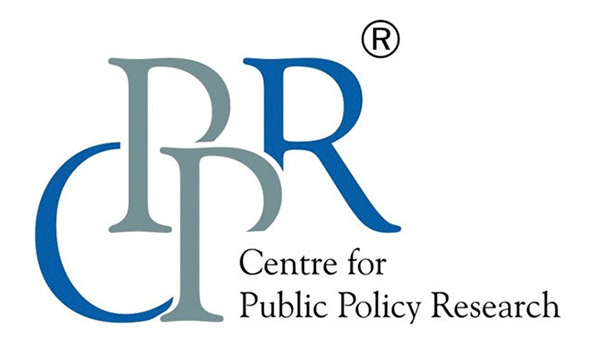From the blog

Vietnam-Laos-Cambodia Special Relations
October 11, 2021
Thiruvananthapuram airport is Adani’s, not all staff happy
October 14, 2021COVID-19 & THE BRICS Labour Market SHE-CESSION

Covid-19 Pandemic drastically altered many things including Female Labour Participation Ratio (FLPR). Economists witnessed strange and asymmetric FLPR around the world prompting them to call it a phenomenon of “She-cession”. This article captures two decades of FLPR in the BRICS countries and how Covid-19 has impacted FLPR behaviour including the phenomena of ‘She-cession’ in the bloc.
2021 marks the 20th anniversary of the BRICS bloc, a group of five developing nations across three continents that were expected to emerge as an attractive investment market & growth centre which can swing and balance the G7-dominated world order.
BRICS nations are at different stages of economic growth but are similar in terms of patriarchal social structure, deeply embedded socio-economic inequalities and vulnerabilities. The countries also witnessed varying regressive disruptions in their political structures while combating Covid-19.
Trends of Female Labour Participation Ratio (FLPR) in BRICS
Declining fertility rates, progress in female education, and favourable economic conditions in the BRICS bloc should have ideally accelerated female labour participation rates in their respective economies. Yet, the FLPR trends have been heterogeneous in the bloc.

China, the frontrunner in the group for positive FLPR, has witnessed a steady FLPR decline since 2000. Market liberalization and declining state control over the labour market and the operational cost in hiring women has discouraged businesses to employ more women in China.
On the contrary, FLPR in Russia, Brazil and South Africa seem to have stagnated at around 50-60% during the last decade until the pandemic hit (Fig.1). Come 2020, FLPR for Brazil dropped nearly 13%, (the highest decline among BRICS) and 8% for South Africa.
India presents a peculiar case of FLPR. India has been performing poorly in FLPR, far below the group’s average. However, short-term spikes are seen whenever the country witnesses an economic slowdown (implying distress-driven female employment to supplement falling household incomes). Correspondingly, Covid-19 saw India’s FLPR rising to 24.8%. Surprisingly, Russia, on the other hand, witnessed no change marked by the business-as-usual FLPR trend in 2020.
BRICS: The Missing Female Workforce
Except Russia, the BRICS nations were expected to enjoy a beneficial demographic dividend for at least another 30 years with comparative advantage benefits. Unfortunately, the bloc couldn’t maximize inclusive labour participation largely due to FLPR limitations and dampered labour market reforms. While a wide gender gap spells trouble for the national economy, gender equality is about economic opportunity and collective prosperity.
Individually, BRICS member countries have certainly taken progressive efforts to promote gender equality through laws and government programmes. However, as the data indicates, much more needs to be done on ground. Given the FLPR asymmetry, BRICS as a bloc may initiate women empowerment audits and explore target based schemes so that it becomes a benchmark path for other countries too. Covid-19 pandemic witnessed deteriorating FLPR, therefore, it is definitely time for the bloc to initiate positive steps.
While labour markets all over the world were severely affected by the pandemic, women experienced a greater negative impact. Given the structural limitations of BRICS countries’ labour markets, women generically were more employed in temporary and informal sectors which caused them to be the first victims when Covid-19 labour market crash happened. Additionally, their jobs were contact intensive, thereby being directly disrupted by lockdowns and social-distancing. Lastly, as schools and institutions closed due to the pandemic and children had to be at home, the patriarchal order of these countries further pushed women to home care.
Combating She-cession
Undoubtedly, a high degree of variation exists amongst nations when it comes to the incidence of ‘she-cession’. Even then, gender equality in the labour market merits special attention from the BRICS bloc. Since fewer working women imply high dependency rates leading to lower family savings and economic contractions irrespective of favourable demographic dividend, BRICS as a bloc may set the example with target centric policies and proactive initiatives which can guide many countries to follow the BRICS model.
The proposed “BRICS Gender and Women’s Forum” offers hope towards exchanging best practices across BRICS countries to promote women-centric economic growth agenda which may have to be taken on a mission mode basis to achieve beneficial BRICS- FLPR Matrix.
References
International Labour Organisation. “Decent Work and Economic Growth: Women’s Participation – Equal Pay for Work of Equal Value.” 2018,
https://www.ilo.org/wcmsp5/groups/public/—dgreports/—dcomm/documents/publication/ wcms_636205.pdf.
Piggott, John, and Alan Woodland, editors. Handbook of the Economics of Population Aging. vol. 1, Elsevier, 2016.
World Economic Forum. Global Gender Gap Index 2021. 2021,
https://www.weforum.org/reports/global-gender-gap-report-2021.
This blog was written by Anushka Dwivedi and Rakshikha P under guidance of Dr. R P Pradhan, CPPR Distinguished Fellow.
Views expressed by the author are personal and need not reflect or represent the views of Centre for Public Policy Research.

